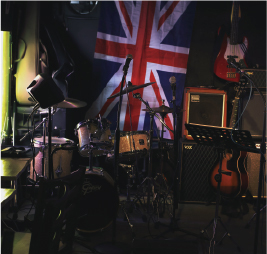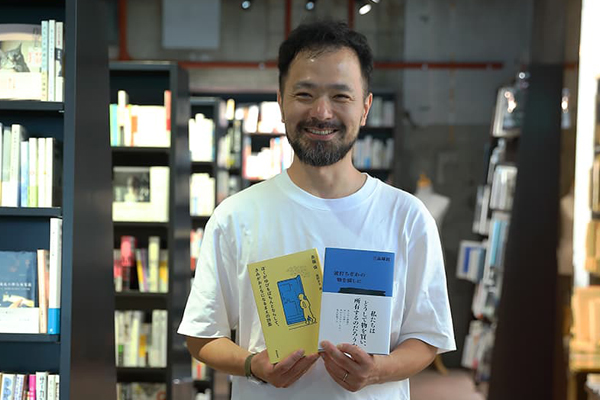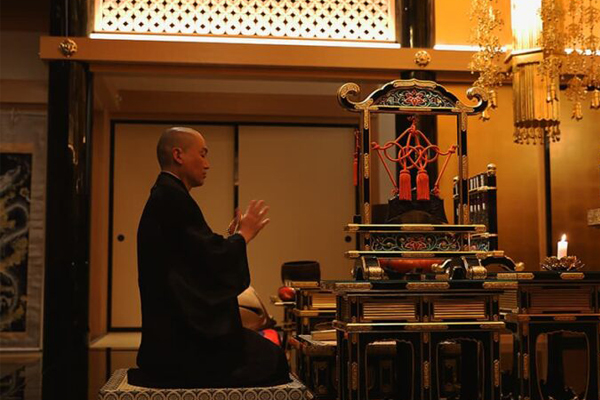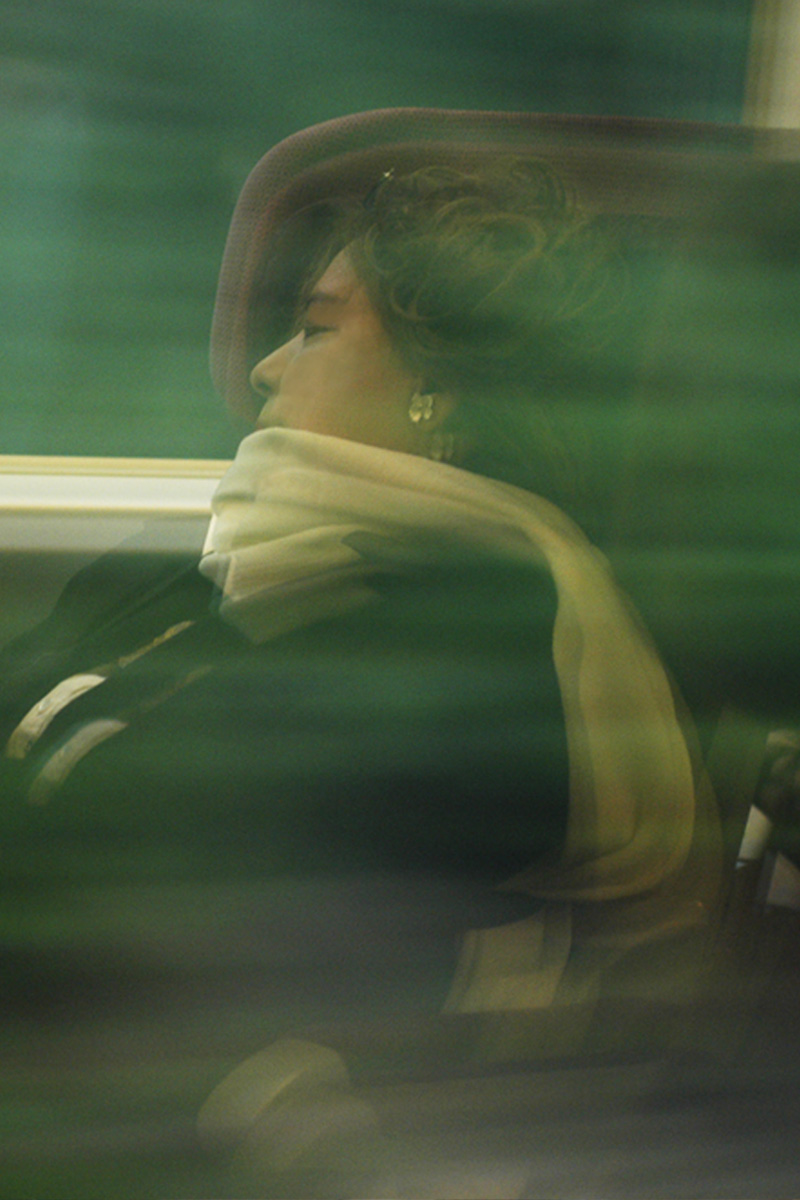
奇蹟のピアニストよ、
永遠に。
奇蹟のピアニストよ、永遠に。
失敗は天才のはじまり、という話。

完璧なテクニックをもつミュージシャンがいる。 あるいは、写真と見紛うばかりの写実的な絵を描く画家がいる。 どちらももっている技術は凄く、感動を覚える。 一方でどこか音程が外れた鼻唄のような歌にじ〜んとしたり、 落書きのような絵に心が揺さぶられることもある。 不完全、だからこそ人の心を動かすことがある。 “私は機械じゃない、だから間違えることもある”、 と公言していたピアニストがフジコ・ヘミング。 一方で、フジコはミスを恐れていたともいう。 そんなフジコ・ヘミングとはどんな人物だったのか取材をしてみた。 この号を読んで、フジコのピアノを聴きたいと 思ってもらえるとうれしいです。
奇蹟のピアニストよ、永遠に。
Feature | 2025.4.24
失敗は天才のはじまり、という話。
完璧なテクニックをもつミュージシャンがいる。
あるいは、写真と見紛うばかりの写実的な絵を描く画家がいる。
どちらももっている技術は凄く、感動を覚える。
一方でどこか音程が外れた鼻唄のような歌にじ〜んとしたり、
落書きのような絵に心が揺さぶられることもある。
不完全、だからこそ人の心を動かすことがある。
“私は機械じゃない、だから間違えることもある”、
と公言していたピアニストがフジコ・ヘミング。
一方で、フジコはミスを恐れていたともいう。
そんなフジコ・ヘミングとはどんな人物だったのか取材をしてみた。
この号を読んで、フジコのピアノを聴きたいと
思ってもらえるとうれしいです。
About how failure can be the start of genius.
Some musicians play with flawless technique.
Some artists paint with photo-like precision.
Their skill is moving—but sometimes,
it’s a slightly off-key hum or
a messy sketch that touches us more.
Imperfection can move us in unexpected ways.
It’s that very imperfection
that can touch us most deeply.
“I’m not a machine—so of course I make mistakes”
pianist Fujiko Hemming once declared.
Yet she was also known to fear them.
So who was the real Fujiko?
We set out to find out.
If this inspires you to listen to her piano,
I’ll consider myself happy.

奇跡のピアニストと呼ばれたアーティストがいた。
彼女が弾く「ラ・カンパネラ」は人々の心を鷲づかみにし、
波瀾万丈の人生は多くのメディアに取り上げられ一躍、時の人になる。
「私は機械じゃないから。いつも同じようには弾けない」といい放ち、
正確なテクニックよりも、そのときどきでの、自分の感情表現を大切にした。
天才、わがまま、変人、愛すべき人。
さまざまに形容されるフジコ・ヘミングはいったいどんな人物だったのか。
そのキャラクターを知るほどに、フジコの魅力が増していく。
She was known as the Miracle Pianist.
Her rendition of La Campanella captivated hearts, and her dramatic life story catapulted her into the spotlight.
“I’m not a machine. I can’t play the same way every time,” she said,
choosing emotion over technical perfection.
Genius. Stubborn. Eccentric. Endearing.
Fujiko Hemming has been called many things—but who was she really?
The more you learn about her, the more she draws you in.
その昔、メルセデスベンツの広告に「人は誰でもミスをする」というキャッチフレーズがあった。あたりまえのことを改めていわれると、そのあたりまえを忘れていたことに気づかされる。そう、人は失敗をするものだ。だからこそ人間らしくあり、ときにはそれが魅力になる。
奇蹟のピアニストと呼ばれるフジコ・ヘミングもこういっている。「私は機械じゃないから、いつも同じようには弾けない」。小さなミスを問題にするより、その曲をどういった音で自分らしく弾くかが問題だ、と。さらに「ショパンやリストがここにいたら、きっと彼らは私の演奏を聴いて “そういう弾き方もいいね” といってくれるはずと」と続ける。
この言葉が正しいことは、フジコ自身の演奏が証明してくれる。繊細で美しい音色を聴かせるかと思うと突然、鍵盤に指を叩きつけるような荒っぽい音が響く。その情動的ともいえる演奏は聴く人の心を掴み、揺さぶる。
たとえそこにミスがあったとしても、その欠けたところにフジコの人間性や表現への意志の強さを感じ、感動する。不完全であるからこそ美しく、愛おしい。
人は機械じゃない、だからいつかは寿命がくる。フジコは2024年4月21日、92歳でこの世を去った。晩年も精力的に演奏活動を続けていただけに、いなくなってからの寂しさは大きい。日本人の母とスウェーデン人の父をもち、ベルリンから日本、ウィーン、ストックホルム、パリなど世界を転々としたピアニスト。フジコ・ヘミングとはどんな人物だったんだろうか。それを探りたくって、20年以上にわたってフジコを撮り続けた写真家、中嶌英雄さんに話をうかがった。いまがちょうど一周忌の頃。フジコの人となりを知って、代表曲である「ラ・カンパネラ」を “そういう弾き方もいいね” と思いながら聴きたい。
Years ago, a Mercedes-Benz ad said, “Everyone makes mistakes.” It’s a simple truth—but easy to forget. Mistakes are part of being human. And sometimes, they’re what make us beautiful.
Even the “Miracle Pianist” Fujiko Hemming said: “I’m not a machine—I can’t play the same way every time.” For her, it wasn’t about avoiding small mistakes, but staying true to herself in every performance. “If Chopin or Liszt were here, she once said, I’m sure they’d say, ‘That’s a nice way to play it, too.’”
Fujiko’s performances proved her words. One moment, delicate and lyrical—the next, raw and explosive. Her emotional playing gripped listeners and shook them to the core. Even if there were flaws, those imperfections revealed her humanity—
and her unwavering commitment to expression. That’s what moved us. Because imperfection can make something even more beautiful—and loved.
People aren’t machines—and one day, every life ends. Fujiko passed away on April 21, 2024, at 92. She stayed active into her later years, making her absence feel even greater. Born to a Japanese mother and Swedish father, she lived all over—Berlin, Japan, Vienna, Stockholm, Paris—rarely settling long. But who was she, really? To find out, I spoke with photographer Hideo Nakajima, who spent over 20 years capturing her life. A year has passed since her death. As you get to know her story, I hope you’ll listen to her signature piece La Campanella and think, “That way of playing is beautiful too.”
フジコ・ヘミングの人生を知れば、彼女の音楽に深みが増す。
Feature | 2025.4.24
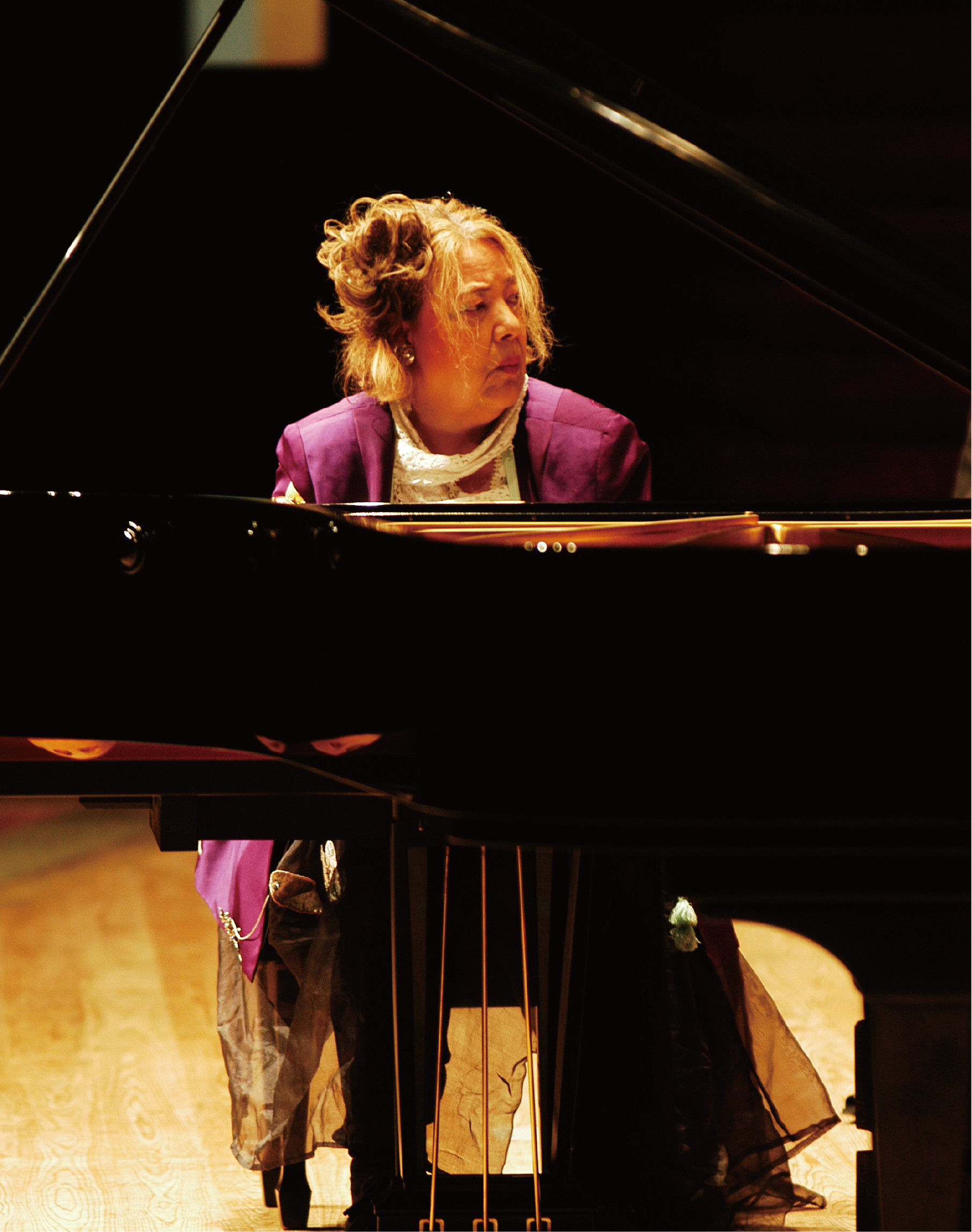
欧州と日本を往来しながら、やがて成功への道を歩みはじめる。
フジコ・ヘミングは1931年にベルリンに生まれる。父親はスウェーデン人の画家で建築家のゲオルギー=ヘミング・フリッツ・ジョスタ。母親は日本人でピアニストの大月投網子。弟には俳優の大月ウルフがいる。
幼少期に一家で日本へと移住するも、父だけがスウェーデンへ帰国。母と弟との生活をおくりながら東京藝術大学を卒業したフジコはドイツへと留学しようとする。しかし国籍がスウェーデンにも日本にもないことが発覚し、パスポートが取得できなくなる。そんなときフジコのピアノを聴いた駐日ドイツ大使から「難民として渡航許可を取りなさい」と助言され、念願だった留学が叶う。
ドイツではベルリンの音楽大学を優秀な成績で卒業し、世界的な指揮者のバーンスタインにも注目されたフジコだが、風邪をこじらせ聴力を失う。そもそも16歳のときに中耳炎で右耳の聴力をなくしていたフジコは左耳の聴力もなくし、絶望の淵で泣き暮らした。その後、治療と必死のリハビリでなんとか40%ほど聴力を回復させ、またピアノが弾けるようになった。
そんなドイツでの生活は極貧で、ピアノの先生をしながら病院の清掃員もした。 「正直にやっていれば、この世の中、必ず報われる」、 「人生なんて、人に相談してもしかたないのよ」、 「朝、ああ、今日も生きていた。神様ありがとう」。 これらはフジコの言葉。敬虔なキリスト教徒だったフジコは、神様と自分を信じることで辛い時期を乗り越えてきた。
30年ほど続けてきた海外生活だったが、母の死をきっかけに帰国。それからしばらくして、NHK「ETV特集」で「フジコ 〜あるピアニストの奇蹟〜」が放映され大反響を呼ぶ。
「有名になって変わったこと?生活は変わったけど、私自身はなにも変わっていない。いちばんうれしいのは経済的に余裕が出て、猫にましな食事をさせられるようになったことかしら」。そう語っていたフジコは時代の主役に。デビューCDの「奇蹟のカンパネラ」は3ヶ月で30万枚の大ヒット。2001年にはカーネギーホールでリサイタルを開き、2003年には、菅野美穂がフジコを演じたドラマ「フジ子・ヘミングの軌跡」が20.1%の高視聴率を記録。自身のCDレーベルの発足や、日本をはじめ世界各地でのコンサートなど音楽活動を精力的に行うなか、2023年11月、自宅の階段で転倒し脊髄を損傷。その後、膵臓ガンが見つかり2024年4月21日、92年の生涯を終える。
フジコの人生を思いながら、いまでもときおり「ラ・カンパネラ」を聴く。不思議なことに、亡くなってからますます、その演奏に魂がこもったように聴こえる。
The more you Know Fujiko Hemming’s life,
the deeper her music becomes.
She traveled between Europe and Japan, slowly finding her path to success.
Fujiko Hemming was born in Berlin in 1931 to a Swedish father, painter and architect Fritz Gösta Georgii-Hemming, and a Japanese mother, pianist Toako Ohtsuki. Her younger brother was actor Ulf Otsuki.
The family moved to Japan during her childhood, though her father returned alone to Sweden. She lived with her mother and brother, graduated from Tokyo University of the Arts, and hoped to study in Germany. But lacking any official nationality—neither Swedish nor Japanese—she couldn’t obtain a passport. Then, moved by her playing, the German ambassador advised her to apply for refugee status—opening the door to her dream of studying abroad.
In Germany, Fujiko graduated with honors from a Berlin music university and even drew the attention of Leonard Bernstein. But a severe cold caused her to lose hearing in her left ear—she had already lost her right at 16. Devastated, she fell into despair. Through treatment and relentless rehab, she recovered about 40% of her hearing—just enough to play again. Her life in Germany was marked by poverty. She taught piano and worked as a hospital cleaner to survive. “If you live honestly, life will reward you.”
“There’s no point in asking others about your life—it’s yours.” “Every morning I think, ‘I’m alive today. Thank you, God.’” A devout Christian, Fujiko relied on her faith in God—and in herself—to endure.
After some 30 years abroad, she returned to Japan following her mother’s death. Some time later, the NHK documentary Fujiko: The Miracle of a Pianist, aired and became a nationwide sensation.
“What’s changed since I became famous? My lifestyle, sure, but not me. What makes me happiest is finally giving my cats better food,” Fujiko once said, embracing her moment in the spotlight. Her debut CD Miracle Campanella sold 300,000 copies in three months. In 2001, she performed at Carnegie Hall. In 2003, a TV drama based on her life, starring Miho Kanno, drew a 20.1% rating. While performing worldwide and launching her own CD label, tragedy struck in November 2023—she fell at home and injured her spine. Soon after, she was diagnosed with pancreatic cancer and passed away on April 21, 2024, at the age of 92.
Even now, I sometimes listen to La Campanella while thinking of Fujiko’s life. Strangely, her performances sound even more soulful now that she’s gone.


思いやりがあり、優しかった、フジコの素顔を知る。
Feature | 2025.4.24
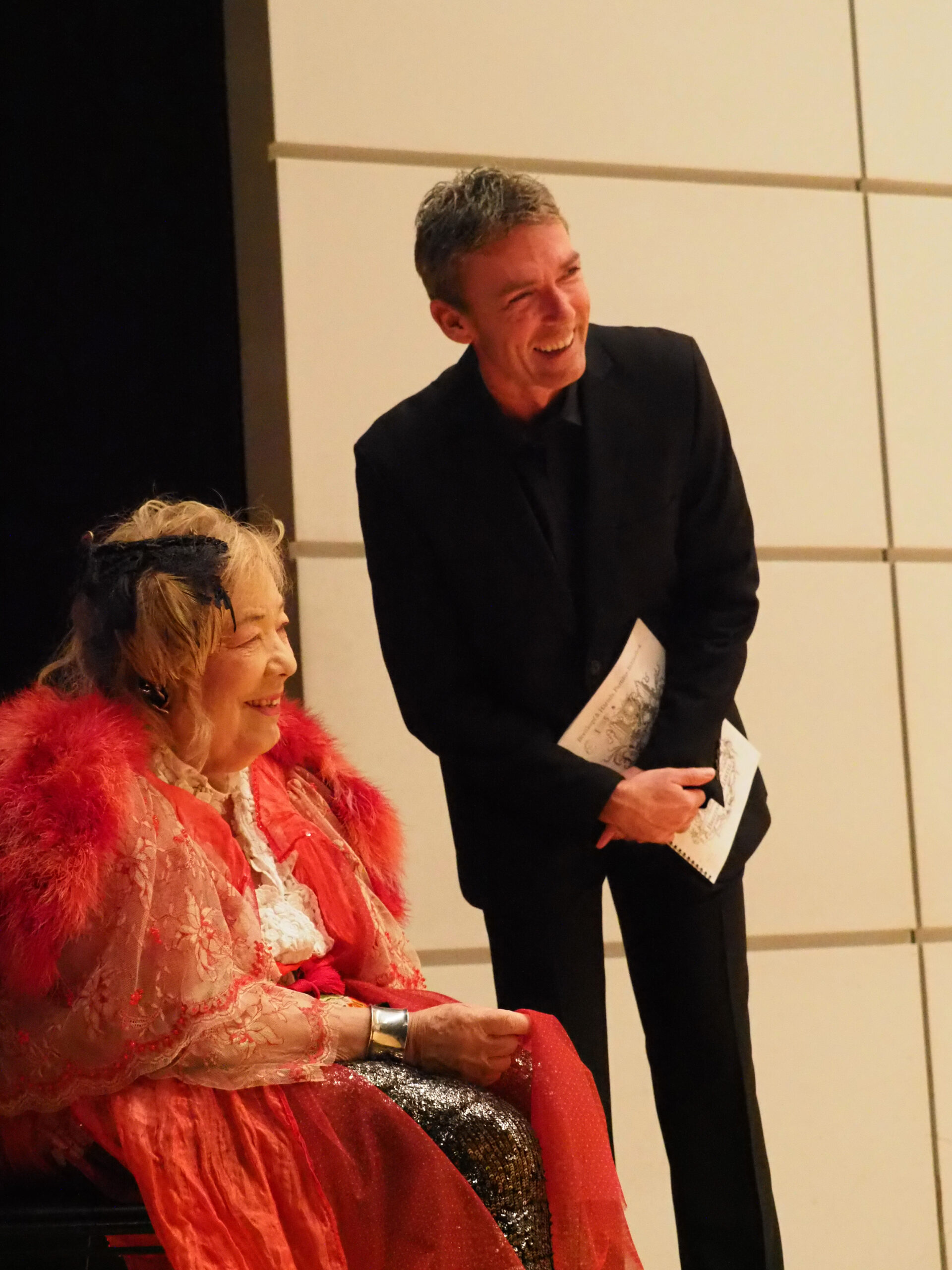
20年近く、フジコを撮ってきた写真家がいる。
ステージで、プライベートで彼女はどんな人物だったのかうかがった。
フジコ・ヘミングを良く知る人に写真家の中嶌英雄さんがいる。「いまから20年ほど前、ベルギーのオーケストラの撮影に行ったら、ゲストとしてフジコさんがいた。こっちは気軽に『写真、いいですか』といってシャッターを押し、その場で撮影した画面を見せた。するとフジコさんは喜んでくれて『あんた、明日も来るんでしょ?』って。翌日はスケジュールに入っていなかったけど、そういうならと次の日にまた行きました。それがお付き合いの始まりです」。
フジコの自宅はたまたま、中嶌さんの家の近くだった。「偶然でしたね、ウチから歩いて5分ほどの距離。家が近いことを知ったフジコさんは『写真屋さん、一緒に帰りましょう』と声をかけてくれた。どんな人間かもまだわからないのに。そういった、人を隔てることのない思いやりや気づかいがフジコさんにはありましたね」。
カメラマンを “写真屋さん” と呼ぶ、そんなところにもフジコらしさがあらわれている。「フジコさんはね、飛行機が嫌いなんですよ。日本に来るときは仕方なく乗りますが、日本国内では陸路で移動します。これ、けっこう大変なんですよ。飛行機のような大きなものが空を飛んでいるのが信じられないようでした(笑)。それもまたフジコさんらしさでしたけどね」。
嫌なものは嫌と主張するフジコの性格は、ときにワガママに見られた。 「フジコさんは、本当は写真が嫌いなんです。ファンの人が撮らせてくださいというと渋々と応じるのですが、正面ではなくそっぽを向く。 こっちを向いてくださいといわれても、向かない。 そういう人だから、もう仕方ない」。
フジコとの想い出がいくつもある中嶌さん。 なかでも印象的だったのが楽屋でのできごと。「あるとき、楽屋に呼ばれたから行ってみると、いくつかの衣装を見せて 『今日はどれがいいかしら?』 と聞いてくる。 僕が『これがいいと思う』と返すと、その衣装を着て舞台に上がってくれる。 本当は決まっていたものがあったと思うのですけどね」。 こうして、ときにフジコは写真家から見て写真映えする衣装を選ばせてくれた。「かなり変わった人でしたよ。とてもシャイで人見知り。それをカバーするために、ぶっきらぼうなもの言いをして、それが表に出るから厳しい人や勝手な人だといわれる。でも実は、とても優しい人でした。そういう意味では自分のイメージづくりがうまくできない、不器用な人だったかもしれません」。 相手への細かな心遣いができる、だから中嶌さんは20年近くもの間、フジコと付き合ってこれた。
Kind and compassionate—
Getting to know the real Fujiko.
One photographer spent nearly 20 years capturing her life.
On stage and off—I asked what she was really like.
Photographer Hideo Nakajima knew Fujiko well. “About 20 years ago, I was in Belgium photographing an orchestra when Fujiko showed up as a guest. I casually asked to take her photo and showed it to her right away. She was delighted and said, ‘You’re coming again tomorrow, right?’ I hadn’t planned to, but since she asked, I came back the next day. That’s how it all started.”
It turned out Fujiko lived just five minutes from Nakajima. “It was a coincidence—only about five minutes on foot from my place. When she found out, she said, ‘Hey, Mr. Photographer, let’s walk home together.’ She barely knew me, but that was Fujiko—naturally kind and open, never putting up walls.”
Calling a cameraman “Mr. Photographer”—that was pure Fujiko. “Fujiko hated airplanes, you know. She’d fly overseas if she had to, but within Japan, she always traveled by land, no matter how difficult. She simply couldn’t believe something that big could stay up in the air! [laughs] But that too was so her.”
Fujiko’s honesty and refusal to compromise sometimes made her seem difficult. “She didn’t like being photographed. If fans asked, she would reluctantly agree but turn her face away. Even when asked to look at the camera, she wouldn’t. That was just her—you had to accept it.”
Nakajima has many memories of Fujiko. One stands out: “She once called me backstage, showed me a few outfits, and asked, ‘Which one should I wear today?’ I picked one, and she wore it on stage that very evening. I think she already had something in mind, but she let me choose anyway.” Fujiko had a unique charm. “She was shy and reserved, often blunt to hide it. People saw her as cold or arrogant, but she was deeply kind. Maybe she just wasn’t good at shaping how others saw her—she was a little clumsy that way.” It was that quiet thoughtfulness toward others that kept Nakajima by her side for nearly 20 years.
一周忌を迎えて、フジコへの想いはますます深くなっていく。
Feature | 2025.4.24
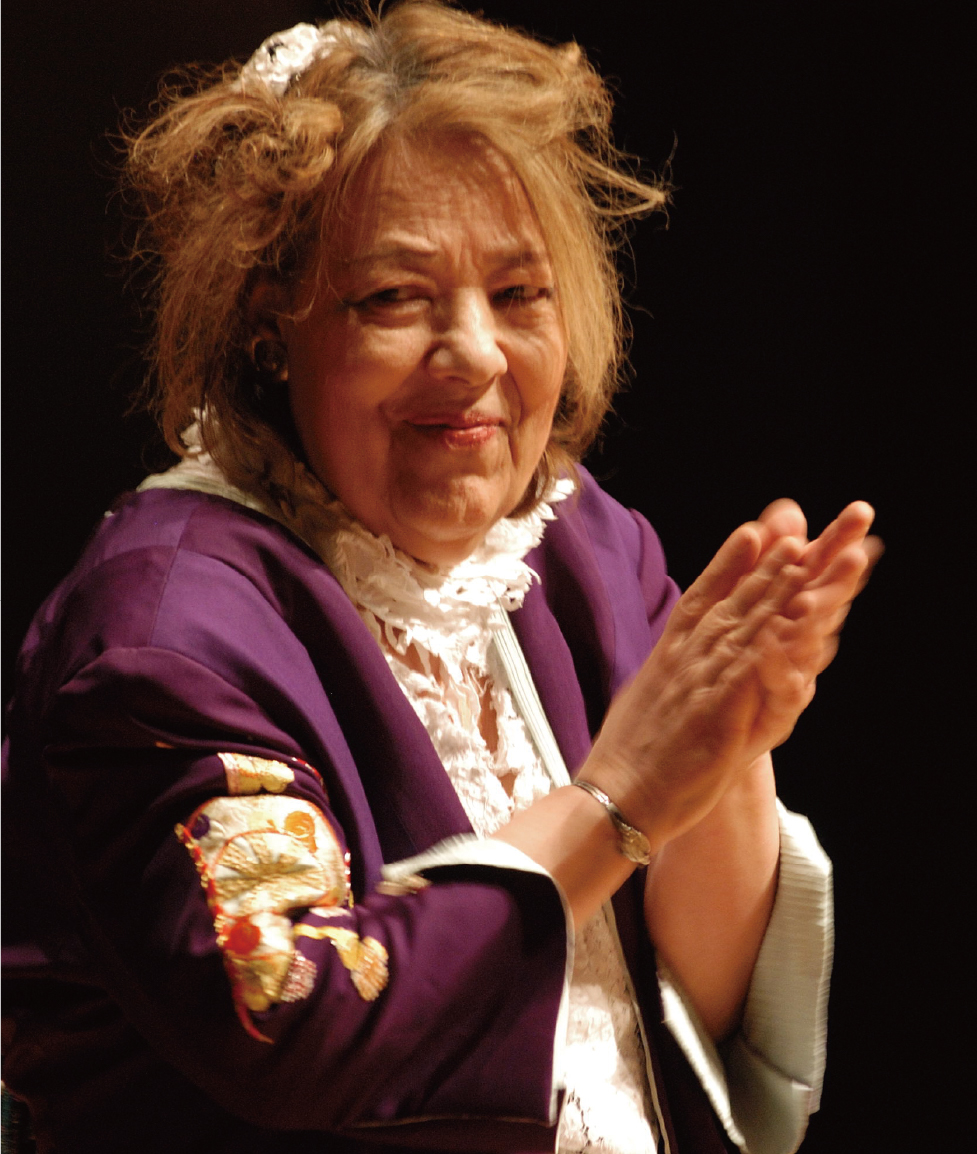
数々の逸話のなかに浮かび上がるフジコ。
彼女の人となりと音楽は、いまでも多くの人の記憶に生きている。
「譜面どおり正しく弾くという教え方は危険で、ただ機械的なつまらない音楽になるだけ。私は演奏でけっこうミスをしましたけど、アルトゥール・ルービンシュタインも、バケツ一杯くらい間違えたというんだから、いいんじゃない」と語っていたフジコは、実はミスに対して神経質だったと中嶌さんはいう。「私は機械じゃないという威勢のいい言葉は有名だけど、実際は演奏で間違えるとふさぎ込んでしまい、食事もとらなくなる。『今日は悪魔が降りてきた』といって落ち込んでしまい、こちらからは声もかけられない状態になる」。
フジコはミスをしないためにも練習に練習を重ねた。「フジコさんは、それはもう努力の人でした。あるとき、調律師がフジコさんのピアノのハンマーを、こんなに四角くなったのは見たことがないといった。丸いハンマーが弦を叩くうちに四角くなったらしいんだけど、それだけ練習をしていたということ。練習していることを見せたり、いったりしないからまわりは気づかなかったのかもしれないけど、見る人が見ればわかるんですね。家にいてもツアーに出ても、時間とピアノがあれば練習をしていました」。
練習は、突然の大一番に対しての準備だったともいう。「いつ、どんな大切なオファーがあるかわからないから、そのためにも練習していた。フジコさんは自分の売り込みにも余念がなく、NHKの番組でブレイクするする前は、海外から有名なオーケストラが来日すると楽屋に押しかけていった。その頃は無名だったから通してもらえなかったといってましたけどね。とにかく常に臨戦態勢で、ちょっとしたチャンスも逃がさないために努力をする人でした」。
20年近くの付き合いも、2024年4月に別れがやってくる。「階段から落ちたと聞いたときは驚きました。そのときはなんとか復帰できるのではと期待しましたが、その後、膵臓ガンと知ったときはもう難しいのではと思いました。高齢でもありましたからね」。
中嶌さんは一周忌に西武渋谷店でフジコの展覧会をプロモートした。「みなさんの記憶のなかに生きているフジコさんの想い出が共有できればと思い企画しました。僕もフジコさんに出会えて嬉しかった。日本各地からヨーロッパまで一緒にまわったのも貴重な体験でした。一緒に過ごした時間は特別なものでした。最後の最後まで追っかけるつもりでやってきたのに、本当に最後がきてみるとショックが大きかった。1年が経ち、やっと落ち着いて、フジコさんをきちんと想えるようになりました」。
「なにいってんのよ写真屋さん、あんたはあんたで頑張んなさいよ」。きっとフジコは天国からそういっている。
With the first anniversary of her passing,
our love for Fujiko only deepens.
Through countless stories, her true self emerges.
Her music and her spirit live on in our memories.
Teaching students to play perfectly by the score is risky—it only leads to mechanical, boring music,” Fujiko once said. “I make plenty of mistakes, but even Arthur Rubinstein said he made enough to fill a bucket.”
But Nakajima recalls she was deeply sensitive about errors. “She’d say, ‘I’m not a machine,’ and it sounded bold and defiant—but if she messed up on stage, she’d shut down, even stop eating. She’d say, ‘The devil came down on me today.’ She’d be so low, we couldn’t even talk to her.”
To avoid mistakes, Fujiko practiced relentlessly. “Fujiko was tireless. One day, her piano tuner said he’d never seen hammers worn down into such square shapes. They were originally round—hitting the strings over and over had made them square. That’s how much she practiced. She never showed her effort, but if you looked closely, it was clear. At home or on tour, if she had a piano and time, she was practicing.”
Fujiko practiced constantly to be ready for any big break. “She believed opportunity could come anytime—that’s why she practiced. Before her big break at NHK, whenever a famous orchestra came to Japan, she’d rush backstage to meet them, but as an unknown, she was often turned away. She was always in go-mode, never willing to miss a chance.”
After nearly 20 years of friendship, their time together ended in April 2024. “I was shocked to hear she’d fallen down the stairs. At first, I hoped she’d recover—but when I found out about the pancreatic cancer, I knew it would be hard. She was quite elderly by then.
To mark the first anniversary of her passing, Nakajima held a Fujiko Hemming exhibition at Seibu Shibuya. “I wanted to share the memories of Fujiko that still live in people’s hearts. Meeting her was a gift. Traveling together, all over Japan and in Europe, was priceless. The time we spent together was truly special. I always thought I’d be there to the very end. When that moment came, it hit harder than I expected. But now, a year later, I can finally remember her with peace.”
“Come on, Mr. Photographer—don’t worry about me. Just do your best.” No doubt, Fujiko is saying that from heaven right now.
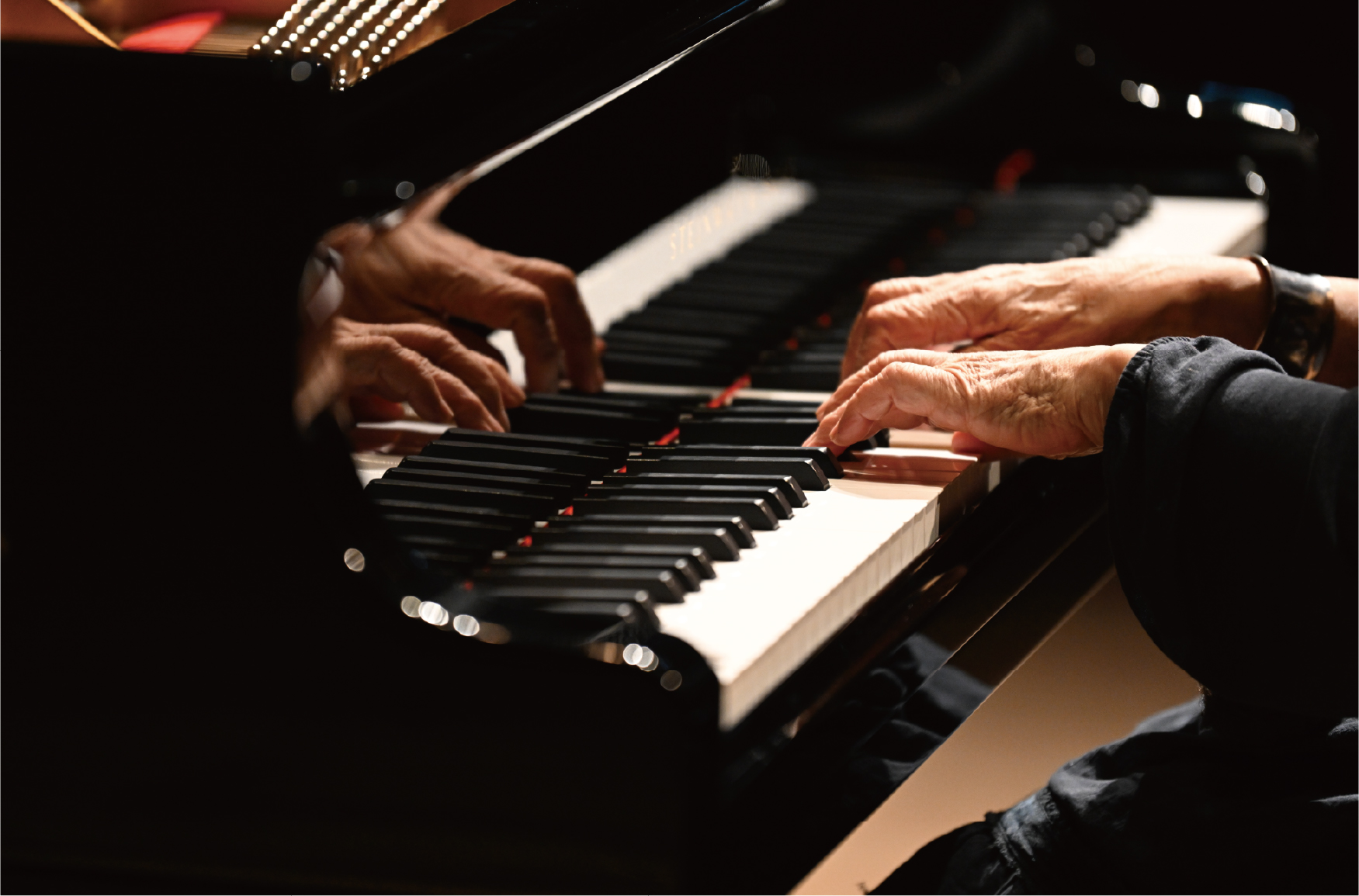
音楽だけでは飽き足らず、絵にも自分を表現したフジコ。
Feature | 2025.4.24
可愛らしく、キュートなフジコの絵。
そこには彼女ならではのワールドが描かれている。
Music wasn’t her only outlet—
Fujiko expressed herself through painting too.
Her art is charming and cute, a world uniquely her own.
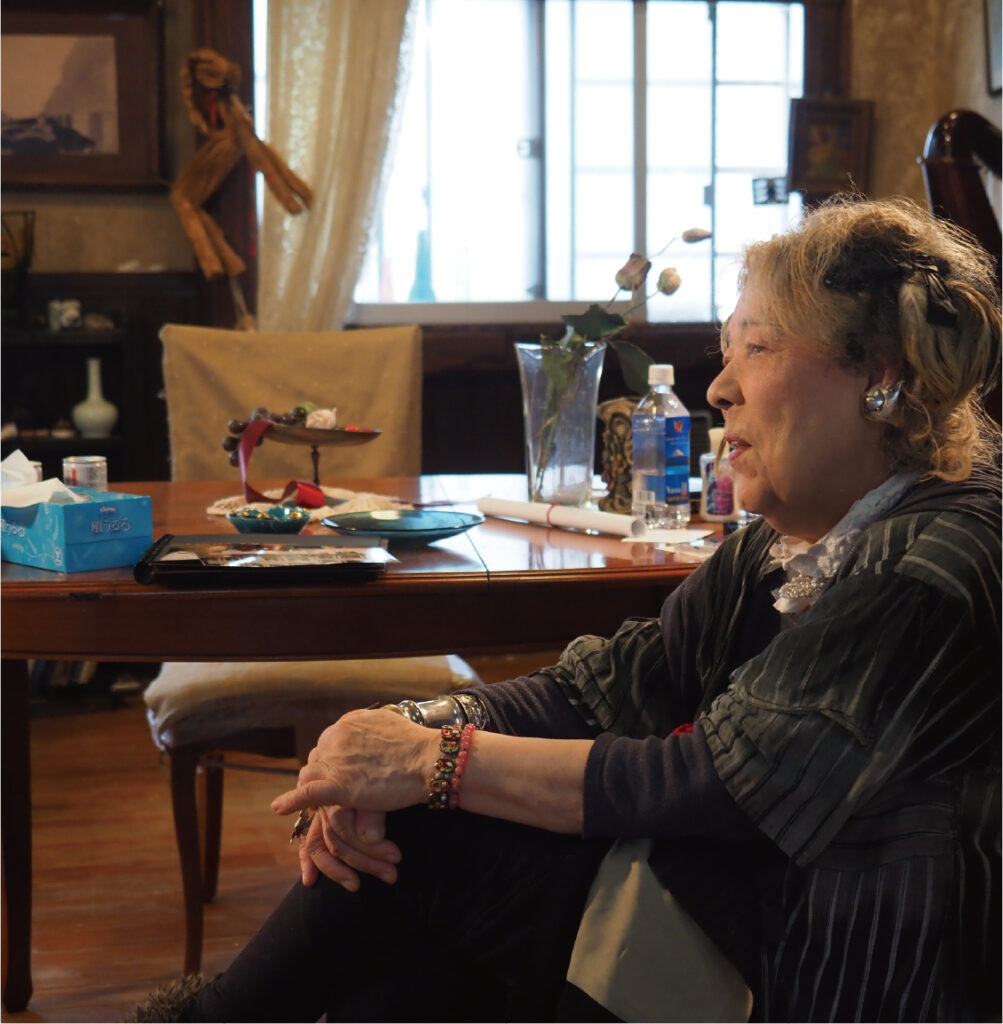
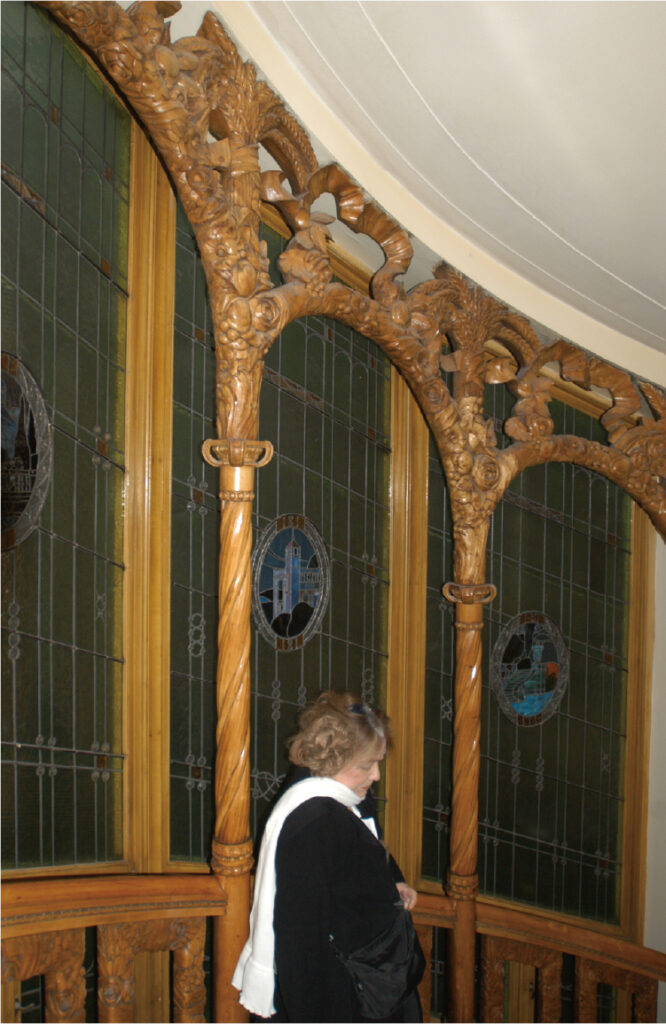

フジコ・ヘミングがピアノと同じように愛したものに絵画がある。鑑賞ではなく自分で描く。そう、フジコはピアニストでありながら画家でもあった。
フジコの画家としての評価は、特にヨーロッパで高いといい画集も発表されている。モチーフになっているのはフジコの好きなものたち。そこには猫や花がいっぱい。父と遊ぶ子どもの頃の想い出や日常生活のワンシーンもある。豊かな色彩のチャーミングな絵が多く、それはまるでフジコのピアノを聴きながら躍っているような楽しいタッチで描かれている。また、浮世絵にインスピレーションを受けたものや桜や着物を描いた作品もあり、フジコの日本への想いをうかがいしることができる。
そもそも根っからの表現者だったフジコは着るものも自分でクリエイティブした。「うんと若いころさんざん着て飽きてしまった洋服を、こうやって綺麗な部分だけ切り取って、捨てないでとっておいて、あとで別の洋服に貼り付けるのよ」と語っていたフジコ。着るものには必ず、何かしら手を加えたくなったという。またステージでは着物を自分でアレンジしたものを着ることが多かった。
私は機械ではない、とばかりに、音楽に、絵に、着るものに自分を表現したフジコ。それこそが、彼女らしさ。
※本文中のフジコ・ヘミングの言葉はすべて、下記書籍より引用しました。
引用:フジコ・ヘミング(著)/中嶌英雄(著・写真)
「奇蹟のピアニスト フジコ・ヘミングのことば エンジェルはそばにいる」双葉社(2024年7月)
Fujiko Hemming loved painting as much as the piano—not just looking at it, but creating it. She wasn’t just a pianist; she was a painter too.
Fujiko’s paintings were especially well received in Europe, where she even published art books. She often painted what she loved—cats, flowers, childhood memories with her father, and everyday scenes. Her colorful, lively style feels like it dances to the rhythm of her piano. Some of her works, inspired by ukiyo-e, featured cherry blossoms and kimono, reflecting her deep affection for Japan.
A natural creator, Fujiko expressed herself through fashion too. “I take clothes I wore a lot when I was younger but got tired of,” she once said, “cut out the pretty parts, save them, and later stitch them onto something else.” She always felt the urge to add her own touch to the clothes she wore, often performing in kimono she had customized herself.
True to her mantra—“I am not a machine”—Fujiko expressed herself through music, art, and fashion. That was Fujiko Hemming.
フジコ・ヘミングを撮り続けた写真家にフジコという人を聞いた。
Feature | 2025.4.24

今回、お話しをうかがったのは写真家の中嶌英雄さん。フジロック・フェスティバルを第一回目から現在まで撮影するなど、舞台写真家の第一人者。これまでに撮影したアーティストはフジコ・ヘミングをはじめ、ローリングストーンズやマイケル・ジャクソン、プリンス、U2、セリーヌ・ディオンと枚挙に暇がない。現在では写真家としての活動の他に、銀座でMUSIC&BAR「まじかな」という店を経営。ロックなどの音楽から落語まで幅広いライブが楽しめる。またライブのないときはステージ上に用意された楽器が自由に演奏でき、多くの音楽好きが集まる。
I asked the photographer who captured Fujiko Hemming:
who was she, really?
I spoke with photographer Hideo Nakajima, a leading figure in live performance photography who documented the Fuji Rock Festival from its very first year to the present. His subjects include Fujiko Hemming, The Rolling Stones, Michael Jackson, Prince, U2, Céline Dion—the list goes on. Today, he also runs Majikana, a music bar in Ginza that hosts an eclectic range of live performances from rock to traditional rakugo. On quiet nights, guests can hop on stage and play—drawing a crowd of music lovers.
[PR]会員制プライベートジェットで、より豊かな人生を謳歌する。
Feature | 2025.4.24
交通手段が充実している現代においても、長距離の移動にはストレスがつきまとうもの。
多忙な日々のなかで時間を効率的に使いながら、
快適に、リラックスできる移動手段を人々は望んでいる。
そんな声に応えるのがプライベートジェット。
大空を自由に滑空して、人生はさらに豊かになる。
Enjoy a more fulfilling lifewith a private jet membership.
Even with today’s advanced transportation,long-distance travel can still be stressful.
Busy people want efficient, comfortable ways to get around
—and that’s what private jets offer. Elevate your lifestyle.

日本の多くの場所へダイレクトに、ゆとりの空の旅。


もっと速く、もっと自由に、人間は移動手段を進化させ続けてきた。そして現代、そのひとつの到達点にあるのがプライベートジェットだ。ジェット機を所有するのは機体の購入や維持費などを考えると難しいと思われるかもしれない。だが、OpenSkyが手がける会員制のプライベートジェットサービスを利用すれば比較的リーズナブルに可能になる。
とにかく快適で、圧倒的に便利。日本には飛行機が離着陸できる場所が100以上あるが、OpenSkyはそのほとんどへ飛行可能。想像以上に細かく、日本全国にアクセスポイントがあり、エアラインが就航していない場所へも直行できる。さらに、車で飛行機の機体へ横づけできるのも魅力。つまり、自宅や会社から車に乗れば、そのままジェット機へダイレクト、待ち時間や保安検査などの手間もいらない。これなら出発地から目的地までゆったりと、リラックスした気分をキープしながら移動できる。
では、機内はどうだろう。プライベートジェットというと小型のイメージがあるが、その機内は驚くほどゆとりがある。OpenSkyが提供する機体は現状、最大8名の搭乗が可能。座席はほぼフルフラットに倒すことができるので、リラックスして空の旅を楽しむことができる。またテーブルや電源も完備されているのでストレスなしに仕事ができ、多忙なビジネスパーソンにはありがたい空間となっている。そしてなによりも、周囲の目を気にする必要がないのが嬉しい。プライバシーがしっかり守られながら長距離移動ができ、空の上で大らかな開放感が得られる。
With relaxing direct flights all over Japan.
Travel keeps evolving—faster, freer. Today, one pinnacle of that evolution is the private jet. While owning a jet may seem out of reach given the purchase price and maintenance costs, OpenSky’s membership model makes it surprisingly accessible.
OpenSky flights are exceptionally comfortable and convenient. With access to nearly all of Japan’s 100+ airports—including places commercial airlines don’t reach—you have more options than you’d expect. One major perk: you can drive right up to the jet. No lines, no waiting—just seamless, stress-free travel from start to finish.
So, what’s it like onboard? While you might imagine a cramped cabin, the interior is surprisingly spacious. OpenSky’s jets currently accommodate up to eight passengers. The seats recline nearly flat for true in-flight relaxation. With tables, power outlets, and privacy, it’s an ideal, stress-free space for both work and rest as you ply the skies.
メンバーシッププログラムだからメリットも多い。



プライベートジェットのビジネスは大きく分けて、チャーター型かOpenSkyのようなメンバーシップ型の2タイプがある。チャーターはフライトをするたびに手続きが必要になるなど面倒なことが多い。また料金も割高になりがちだ。一方でメンバーシップ型は機体を区分所有する形態になっているからメリットが多い。もし、1機を単独で所有する場合は購入に数億円以上もかかり、さらに維持費は年間数千万円にもなる。その点、OpenSkyは所有権を分割し、さらに割賦での支払いができるため、所有権の購入は年間200万円ほどから可能。また単年の減価償却費はその6倍ほどにできる。固定費の負担はなく、1時間57万円から利用できるので税務的な負担を抑えながらプライベートジェットを活用した暮らしが享受できる。
欧米では高額所得者層だけでなく、中間所得者層でも家族の重要なイベントなどでプライベートジェットを利用しているという。だが日本ではまだ、プライベートジェットといえば超富裕層たちのものというイメージがある。そんな既成概念を覆してくれるのがOpenSkyの会員制プライベートジェット。上手に利用すれば日本全国、行きたい場所へストレスなくたどり着ける。しかも手が届く範囲の、現実的な料金で。
時間が短縮できるから余裕が生まれる。そして、その余った時間を有意義に使うことで人生はより充実していく。生き方にこだわりのある人が選ぶさらなる移動手段、それがプライベートジェット。
A membership program with plenty of perks.
Private jet services typically come in two forms: charter-based or membership-based like OpenSky. Charters require paperwork for each flight and often cost more. In contrast, OpenSky’s fractional ownership model offers major benefits. Full ownership can cost hundreds of millions of yen, plus high maintenance fees. But with OpenSky, shared ownership starts from just 2 million yen per year, with flexible installment options and tax-friendly depreciation. No fixed costs, and flights start at 570,000 yen per hour—making private jet travel more accessible and efficient.
In the West, private jets aren’t just for the ultra-rich—even middle-income families use them for special occasions. In Japan, they’re still seen as luxury for the elite. OpenSky’s membership model challenges that view, offering stress-free access across Japan at a surprisingly attainable price.
Saving time makes life richer. For those seeking more from life, private jets offer a new way to travel.

広告


